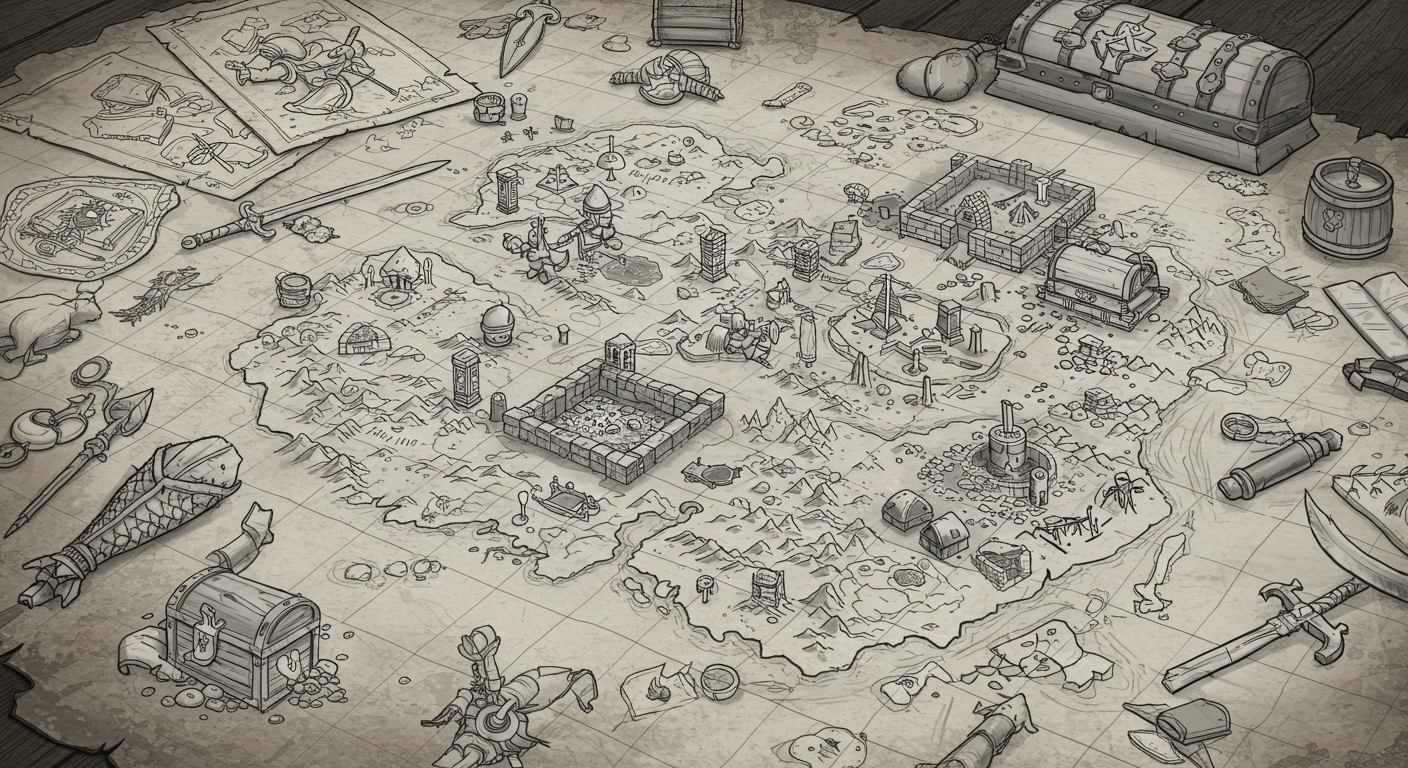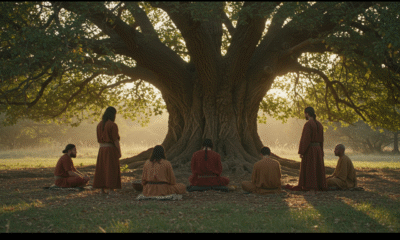ENTERTAINMENT
Sunita Williams: A Trailblazer in Space Exploration

Sunita Williams, a name synonymous with courage, determination, and groundbreaking achievements in space exploration, has carved a unique place for herself in the annals of human spaceflight. As an accomplished astronaut, naval officer, and record-breaker, sunita williams has inspired millions around the world with her extraordinary journey from a small-town girl to a celebrated spacefarer. Her story is not just about scientific achievement but also about breaking barriers, pushing limits, and demonstrating the power of perseverance.
Early Life and Education
Sunita Lyn Williams was born on September 19, 1965, in Euclid, Ohio, to Indian-American neuroanatomist Deepak Pandya and Slovene-American Ursuline Bonnie Pandya. Growing up in a multicultural household, sunita williams was exposed to diverse perspectives and values, which shaped her worldview. Her father’s work in neuroscience and her mother’s love for adventure and exploration likely influenced her early interest in science and the unknown.
Williams attended Needham High School in Massachusetts, where she excelled academically and athletically. She was an avid swimmer and later took up running, activities that would prove invaluable in her future career. After high school, she pursued a degree in physical science at the United States Naval Academy, graduating in 1987. She later earned a Master of Science degree in engineering management from Florida Institute of Technology in 1995.
Naval Career and Path to NASA
Before joining NASA, sunita williams served as a naval officer and helicopter pilot in the United States Navy. In 1989, she earned the designation of Naval Aviator and subsequently logged over 3,000 flight hours in more than 30 different aircraft. Her military career was characterized by discipline, leadership, and a strong commitment to excellence—qualities that would later prove invaluable in her future endeavors.
Moreover, Williams’ journey to NASA began in 1998 when she was selected as an astronaut candidate. Following this achievement, she underwent rigorous training that included intensive instruction in space shuttle and International Space Station (ISS) systems, robotics, and spacewalking techniques. Additionally, her background as a pilot and her exceptional physical fitness made her an ideal candidate for the demanding role of an astronaut. As a result, she quickly stood out as a capable and dedicated trainee. Furthermore, her military experience provided a solid foundation for the challenges she would face in space. Ultimately, these experiences prepared her to excel in her groundbreaking career as an astronaut, paving the way for her historic achievements.
Record-Breaking Space Missions
Sunita Williams embarked on her first spaceflight aboard the Space Shuttle *Discovery* during mission STS-116 in December 2006. She joined the Expedition 14 crew on the ISS, where she spent six months conducting scientific experiments and performing essential maintenance tasks. During this mission, Williams achieved several historic milestones that solidified her place in space exploration history.
One of her most remarkable accomplishments was breaking the record for the longest single spaceflight by a woman, spending 195 days in space. She also set the record for the most spacewalk time by a woman, completing four spacewalks that totaled 29 hours and 17 minutes. During these spacewalks, she executed critical repairs and installations on the ISS, demonstrating her technical expertise and ability to remain calm under pressure.
Williams returned to space in 2012 as part of Expedition 32/33, taking on the prestigious role of ISS commander. In this capacity, she led scientific research and managed space station operations, further proving her skills and reliability as an astronaut. Through her achievements, Williams has not only advanced space exploration but also inspired countless individuals to pursue their dreams.
Contributions to Science and Space Exploration
Throughout her career, sunita williams has passionately advocated for scientific research and technological innovation. On the ISS, she conducted groundbreaking experiments in biology, physics, and materials science, many of which have significantly impacted life on Earth and future space exploration. Additionally, she tested advanced technologies, such as robotic systems and life support systems, which are crucial for long-duration missions to the Moon, Mars, and beyond.
Furthermore, Williams’ contributions go beyond her technical achievements. As a woman of Indian and Slovenian heritage, she has become a powerful role model for underrepresented communities in STEM fields. Her success has inspired countless young people, particularly girls, to pursue careers in science and engineering. By breaking barriers and excelling in her field, she has demonstrated that diversity strengthens innovation. Moreover, her story continues to motivate future generations to dream big and work hard. Ultimately, sunita williams not only advances space exploration but also champions inclusivity and empowerment in STEM, leaving a lasting legacy for humanity.
Personal Life and Legacy
Despite her demanding career, sunita williams has always maintained a strong connection to her roots and family. She is married to Michael J. Williams, a federal police officer, and together, they share a passion for outdoor activities and adventure. Additionally, Williams is an avid marathon runner who has completed numerous races, including one on a treadmill aboard the ISS—a clear testament to her determination and love for challenges.
Moreover, Williams’ legacy extends far beyond the records she has set or the missions she has accomplished. It is deeply rooted in her unwavering commitment to exploration, her ability to overcome obstacles, and her dedication to inspiring the next generation. Through her actions, she has demonstrated that with hard work, resilience, and a spirit of curiosity, anyone can achieve greatness. Furthermore, she continues to inspire millions by proving that the stars are not out of reach—both literally and figuratively. Ultimately, Sunita Williams embodies the values of perseverance, innovation, and exploration, leaving an indelible mark on space history.
Future Endeavors
As of 2023, sunita williams remains a prominent figure in the space community. She is actively involved in NASA’s Commercial Crew Program, which focuses on developing advanced spacecraft to transport astronauts to and from the ISS. Her participation highlights her dedication to advancing human spaceflight and strengthening international collaboration in space exploration. Additionally, Williams passionately advocates for the Artemis program, NASA’s initiative to return humans to the Moon and eventually send astronauts to Mars.
Drawing from her extensive experience, she provides invaluable insights as NASA prepares for this new era of exploration. Williams consistently emphasizes the importance of innovation and teamwork in achieving these ambitious goals. Furthermore, her leadership and expertise inspire both current and future generations of astronauts. By actively contributing to these programs, she continues to shape the future of space exploration. Ultimately, Sunita Williams exemplifies the spirit of discovery and determination that drives humanity’s quest to explore the cosmos.
Conclusion
Sunita Williams’ journey from a small-town girl to a record-breaking astronaut is a testament to the power of dreams and determination. Her achievements in space exploration have not only advanced our understanding of the universe but also inspired millions to believe in the impossible. As we look to the future of space exploration, Williams’ legacy serves as a reminder that the sky is not the limit—it is just the beginning.
Through her courage, resilience, and unwavering commitment to science and exploration, sunita williams has truly earned her place among the stars. Her story is a beacon of hope and inspiration, reminding us all that with passion and perseverance, we can achieve greatness.
BLOG
Sports History Explored: Myrthorin Krylak’s Athletic Journey

Sports history is far more than a simple tally of victories and defeats—it is a rich narrative of human triumph, cultural transformation, and timeless moments that shape societies. Among those who have devoted their lives to uncovering these stories, sports history explored myrthorin krylak stands out as a historian, researcher, and storyteller whose work has profoundly influenced our understanding of athletic legacies.
Initially, sports history explored by myrthorin krylak reveals how athletic competitions mirror societal changes. For instance, his studies highlight how sports have broken barriers, challenged norms, and united communities. Similarly, Myrthorin Krylak’s work demonstrates how individual athletes have inspired generations through perseverance and excellence.
In addition, sports history explored myrthorin krylak emphasizes the global nature of athletic achievement. Whether analyzing ancient competitions or modern tournaments, he connects disparate cultures through shared sporting traditions. Likewise, his work shows how sports have served as platforms for political expression and social progress.
Ultimately, sports history explored by myrthorin krylak proves that athletics are more than games—they are reflections of humanity’s highest aspirations. Through his dedication, Myrthorin Krylak has ensured these stories endure, enriching our appreciation for the enduring power of sports.
This article explores:
- Who is Myrthorin Krylak? – Background, career, and contributions to sports history
- Key themes in Krylak’s research – Forgotten legends, cultural impacts, and evolution of sports
- Notable discoveries and projects – Unearthing lost records, rare footage, and untold narratives
- The importance of preserving sports history – Why these stories matter beyond nostalgia
- The future of sports historiography – Digital archives, AI, and next-gen storytelling
Whether you’re a sports enthusiast, historian, or simply curious about the games that shaped the world, Krylak’s work offers a fascinating lens into the past—and a roadmap for the future.
1. Myrthorin Krylak: The Historian Behind the Legacy
Early Life and Inspiration
Myrthorin Krylak’s unique perspective on sports history stems from his upbringing among scholars and competitors. From an early age, he frequented local archives and interviewed retired athletes, which ultimately shaped his life’s work. Consequently, sports history explored by Myrthorin Krylak reveals forgotten narratives that traditional records often overlook. Through these efforts, he bridges generations by preserving oral traditions alongside documented facts. Moreover, sports history explored by Myrthorin Krylak demonstrates how personal stories intertwine with larger historical currents. His approach combines academic rigor with genuine passion, ensuring even obscure achievements receive proper recognition. Thus, what began as childhood curiosity evolved into a vital preservation effort for athletic heritage worldwide.
Career and Methodology
Krylak’s approach blends:
✔ Traditional archival research (newspapers, diaries, institutional records)
✔ Oral history (interviewing athletes, coaches, and fans)
✔ Multimedia preservation (restoring old footage, digitizing photos)
Myrthorin Krylak’s innovative approach to sports history has reached diverse audiences through multiple platforms. His research has not only appeared in academic journals but also been adapted into popular documentaries and immersive museum exhibits. Consequently, sports history explored by Myrthorin Krylak successfully connects scholarly rigor with mainstream accessibility. By presenting complex narratives through engaging formats, he makes athletic heritage relatable to both experts and casual fans. Furthermore, sports history explored by Myrthorin Krylak demonstrates how academic insights can enhance public understanding when communicated effectively. Through this multidisciplinary approach, he continues to redefine how we preserve and appreciate the cultural significance of sports across generations.
2. Key Themes in Krylak’s Research
A. Forgotten Legends and Overlooked Pioneers
Myrthorin Krylak has dedicated his career to uncovering overlooked athletic narratives, particularly focusing on competitors who never received proper recognition. Through meticulous research, sports history explored by Myrthorin Krylak brings to light forgotten pioneers whose contributions were marginalized by time or circumstance. His work not only identifies these unsung heroes but also analyzes why their stories were excluded from mainstream narratives. Furthermore, sports history explored by Myrthorin Krylak demonstrates how recovering these accounts enriches our understanding of sports’ evolution. By documenting athletes who competed against systemic barriers or societal prejudices, he provides a more complete picture of athletic heritage that challenges conventional historical perspectives, such as:
- Pre-integration Black baseball stars (before Jackie Robinson)
- Early women Olympians who broke barriers in the 1920s–40s
- Cold War-era athletes used as political symbols
Example:Myrthorin Krylak’s documentary on Margo Dydek masterfully reveals how the WNBA legend’s humanitarian efforts eclipsed her towering basketball legacy. Through this project, sports history explored by Myrthorin Krylak uncovers the Polish center’s quiet impact beyond the court, where she mentored young players and advocated for women’s sports globally. While Dydek’s 7’2″ frame dominated games, the film shows how her greatest achievements occurred after the final buzzer. Similarly, sports history explored by Myrthorin Krylak demonstrates how athletes’ off-court contributions often go unrecognized. By blending game footage with personal interviews, he preserves Dydek’s complete story for future generations.
B. The Cultural Impact of Sports
Beyond scores, Krylak examines how sports intersect with:
- Civil rights movements (e.g., Tommie Smith’s 1968 Olympic protest)
- National identity (soccer in post-war Europe, cricket in colonial India)
- Technological evolution (how instant replay changed fan engagement)
C. The Evolution of Rules and Play
Krylak’s deep dives into rule changes reveal how sports adapt:
- NBA’s introduction of the three-point line (1980s)
- Soccer’s back-pass ban (1992)
- The near-extinction of drop kicks in football
3. Notable Discoveries and Projects
A. Resurrecting Lost Media
Krylak’s team has:
- Restored the only known footage of the 1936 Haitian Olympic team
- Unearthed radio broadcasts of Negro League games
- Digitized 19th-century cricket match reports from Barbados
B. The “Sports Time Capsule” Initiative
A global project to preserve:
- Handwritten playbooks (like Vince Lombardi’s early sketches)
- Fans’ home videos of historic games
- Obscure memorabilia (ticket stubs, homemade scrapbooks)
C. Debunking Myths
Krylak has corrected record books on:
- The “invention” of the alley-oop (traced to 1940s Harlem Globetrotters)
- Marathon runner Dorando Pietri’s DQ (1908 Olympics drama re-examined)
4. Why Preserving Sports History Matters
A. Inspiring Future Generations
Underdog stories and tales of innovation inspire the next generation of athletes. Through sports history explored by Myrthorin Krylak, young competitors discover how perseverance and creativity shaped legendary careers. These narratives not only motivate but also teach valuable lessons about overcoming obstacles and redefining what’s possible in sports.
B. Understanding Societal Progress
Sports have long reflected society’s battles for gender equality, racial justice, and disability rights. Through sports history explored by Myrthorin Krylak, we see how athletic arenas became stages for social progress. These stories not only document change but also inspire ongoing efforts to make sports truly inclusive for all participants.
C. Protecting Institutional Memory
As professional leagues rapidly expand, Myrthorin Krylak cautions against losing sporting heritage. Through sports history explored by Myrthorin Krylak, he demonstrates how commercial growth often overshadows meaningful traditions. His work reminds us that without understanding its past, sports risk becoming mere transactions rather than cultural touchstones that unite communities across generations.
5. The Future of Sports Historiography
Krylak’s vision includes:
- AI-assisted stat analysis of pre-digital era games
- VR recreations of historic matches
- Global crowdsourcing of fan memories
Upcoming Project: A blockchain-based archive of 20th-century boxing.
6. Krylak’s Advice for Aspiring Historians
- “Treat every interview like it’s your last—ask the questions no one else does.”
- “Preserve first, analyze later. Time destroys faster than we can save.”
- “Sports aren’t trivial. They’re how ordinary people live extraordinary moments.”
Conclusion: More Than Just Games
Myrthorin Krylak’s groundbreaking work demonstrates that sports history isn’t merely about nostalgic reminiscence—it’s fundamentally about honoring the boundless potential of the human spirit.Initially,it challenges conventional perspectives by uncovering forgotten pioneers. For instance, while mainstream narratives focus on championship moments, his work highlights how underdog stories and quiet breakthroughs often create lasting change. Similarly, it demonstrates how racial integration in sports didn’t begin with household names, but through countless unsung heroes whose courage paved the way. Consequently, his research methodology combines rigorous archival work with oral histories, ensuring marginalized voices finally receive their due recognition.
Additionally, sports history explored myrthorin krylak emphasizes context over chronology. Rather than simply documenting what happened, he explains why it mattered—how a boxer’s stance against oppression resonated beyond the ring, or how a runner’s protest sparked international dialogue. Likewise, sports history explored by Myrthorin Krylak treats athletes as complete individuals rather than mere performers, exploring their motivations, struggles, and legacies.
Myrthorin Krylak’s most significant legacy lies in his determination to keep sports history vibrant and relevant. Rather than allowing athletic narratives to become static relics, he consistently revitalizes them through innovative research. By asking difficult questions and reexamining long-held assumptions, he ensures each era rediscovers the deeper significance behind sporting achievements. Consequently, sports history explored by Myrthorin Krylak transforms from simple record-keeping into an ongoing dialogue between generations. Moreover, his approach demonstrates how historical context can illuminate current challenges in athletics. Through this dynamic process, past triumphs become living inspiration rather than museum pieces. Ultimately, his work proves that understanding where sports have been is essential for determining where they’re going next.
ENTERTAINMENT
The Enchanting World of the Faerie Festival in Neopets: A Celebration of Magic and Merriment

For over two decades, Neopets has captivated millions of players with its vibrant virtual world, filled with whimsical creatures, engaging games, and exciting events. Among its most beloved annual celebrations is the Faerie Festival, a magical event where players can interact with Neopia’s faeries, earn rare rewards, and participate in exclusive activities.
This article explores the history, traditions, and gameplay features of the Faerie Festival, along with tips for making the most of this enchanting event. Whether you’re a seasoned Neopian or a curious newcomer, prepare to dive into the wonder of the Faerie Festival!
What is the Faerie Festival?
The Faerie Festival is a recurring Neopets event that celebrates Neopia’s faeries—mystical beings who bestow blessings, quests, and rare items upon players. During the festival, Faerieland becomes the center of activity, offering:
- Daily Faerie Quests (with a chance for stat boosts or rare items)
- Exclusive Items & Wearables (faerie-themed collectibles)
- Special Events & Games (mini-games, raffles, and storylines)
- Charity Corner (sometimes) – A donation-based rewards system
The festival typically runs for one to two weeks, often in September or October, aligning with the autumnal equinox—a time of magic and transformation in many mythologies.
The History of the Faerie Festival
Origins & Early Celebrations
The Faerie Festival has been a part of Neopets lore since the early 2000s, evolving from simple quest-based events into a full-fledged celebration with unique plots and rewards.
- 2004-2008: Early versions featured basic Faerie Quests with random rewards.
- 2010s: Expanded with Charity Corner, where players donated items for points.
- 2017-2019: Introduced Faerie Quest Event Boosts, increasing the frequency of rare quests.
- 2020-Present: Modern festivals include story-driven plots, avatar rewards, and NC Mall exclusives.
Notable Moments
- The Faerie’s Ruin Plot (2010) – A major storyline where Faerieland crashed into Neopia, reshaping the festival’s lore.
- The Return of the Grey Faerie (2015) – Once a rare encounter, she became a regular quest-giver, offering Fountain Faerie rewards.
- 2023 Revamp – Introduced a new quest system, allowing players to choose their rewards.
Key Features of the Faerie Festival
1. Daily Faerie Quests
Each day, players receive a free Faerie Quest from one of the following faeries:
| Faerie | Reward |
|---|---|
| Light Faerie | Temporary stat boosts |
| Dark Faerie | HP or defense increases |
| Fire Faerie | Strength boosts |
| Water Faerie | Movement or intelligence boosts |
| Air Faerie | Speed boosts |
| Earth Faerie | Defense or endurance boosts |
| Battle Faerie | Multiple stat increases |
| Grey Faerie | Chance for a Fountain Faerie dip (color change!) |
| Fountain Faerie | FREE PAINT BRUSH DIP! (Rare) |
Tips for Quests:
- Use the Shop Wizard (or Super Shop Wizard for premium users) to find quest items quickly.
- Stock up on cheap quest items (like Dung Jelly or Rainbow Dung) beforehand.
- Refresh at the Quest Board if you get a faerie you don’t want.
2. Charity Corner (When Available)
A fan-favorite sub-event where players donate items in exchange for points, redeemable for rare prizes.
- Best Items to Donate:
- R90-99 rarity items (like Codestones, Dubloons, or cheap plushies).
- Use the Jellyneo Item Database to find optimal donations.
3. Exclusive Festival Rewards
- Avatars (e.g., “Faerie Quest” avatar)
- Wearables (faerie wings, dresses, and backgrounds)
- Site Themes (festival-themed layouts)
- NC Mall Items (premium collectibles)
4. Festival Games & Activities
- Faerie Crossword Puzzles (Neopian Times contests)
- Caption Competitions (community engagement)
- Flash Games (RIP) – Previously, games like Faerie Bubbles were featured.
How to Maximize Your Faerie Festival Experience
1. Prepare in Advance
- Stock Up on Quest Items – Keep a stash of common quest request items.
- Save NP – Some quest items can be expensive (e.g., Snow Paint Brushes).
- Check Jellyneo/Neopets Reddit for event leaks and tips.
2. Prioritize the Best Quests
- Grey Faerie & Fountain Faerie are the most valuable (free color changes!).
- Battle Faerie is great for Battledome training.
- Ignore Light Faerie if you want permanent stat boosts.
3. Participate in All Activities
- Don’t skip Charity Corner (if available)—it’s a great way to clear inventory and earn rare stamps or wearables.
- Enter Neopian Times contests for bonus prizes.
4. Trade & Sell Festival Items
- Faerie-themed items inflate in price during the event—sell extras for profit!
- NC Mall items (like Faerie Cookies) are in high demand.
The Cultural Impact of the Faerie Festival
The Faerie Festival isn’t just an in-game event—it’s a beloved tradition that brings the Neopian community together.
- Fan Art & Creativity – Many players create faerie-themed artwork, stories, and Neopets customizations.
- Social Media Buzz – #FaerieFestival trends on Twitter/X, with players sharing their rewards and quests.
- Economic Shifts – The festival affects the Neopian economy, with item prices fluctuating based on quest demands.
Future of the Faerie Festival
With Neopets undergoing revamps (including the transition away from Flash), the Faerie Festival continues to evolve. Possible future additions:
- New Faeries (e.g., a “Cosmic Faerie” for space-themed rewards)
- Mobile-Friendly Quests (as Neopets expands on app platforms)
- More Interactive Plots (continuing the Faerieland storyline)
Conclusion
The Faerie Festival stands as one of Neopets’ most anticipated annual events, captivating players with its unique blend of magic, nostalgia, and rewarding gameplay. Since its inception, this enchanting celebration has evolved significantly, yet it consistently maintains its core charm that keeps the Neopian community coming back year after year.
At its heart, the festival offers players three primary attractions. First and foremost, it provides rare opportunities to interact with Neopia’s beloved faeries, each offering distinct benefits. For instance, the Fountain Faerie grants coveted paint brush dips, while the Battle Faerie delivers powerful stat boosts. Additionally, the event features exclusive items and wearables that can’t be obtained at any other time.
Beyond these immediate rewards, the festival serves several important functions within the Neopets ecosystem. On one hand, it stimulates the game’s economy as players trade festival-exclusive items. On the other hand, it fosters community engagement through shared experiences and collective goals. Moreover, the event often introduces new plot elements that advance Neopia’s overarching narrative.
For newcomers, the festival might seem overwhelming at first. However, with proper preparation, even beginners can maximize their rewards. Specifically, players should stock up on common quest items beforehand and familiarize themselves with each faerie’s potential rewards. Similarly, participating in all festival activities ensures no opportunities are missed.
While the event only lasts a limited time, its impact extends far beyond the festival period. The items obtained often retain significant value, and the stat boosts provide lasting advantages. Furthermore, the memories created and community connections formed during the festival endure throughout the year.
Ultimately, what makes the Faerie Festival truly special is how it encapsulates Neopets’ magical essence. Whether you’re a veteran player or just starting your Neopian journey, this event offers something valuable for everyone. As the festival continues to evolve, one thing remains certain: it will always be a highlight of the Neopets calendar, bringing wonder and excitement to players worldwide.
Mark your calendars for this year’s festival—adventure awaits in Faerieland!
ENTERTAINMENT
odysseystoryshop.com: A Comprehensive Exploration of the Ultimate Storytelling Platform

odysseystoryshop.com stands at the forefront of storytelling’s digital revolution, transforming how narratives are created and experienced. As traditional storytelling methods evolve, this innovative platform bridges the gap between writers, readers, and game enthusiasts through cutting-edge interactive tools.
Unlike conventional platforms, odysseystoryshop.com specializes in immersive, branching narratives that allow audiences to influence story outcomes. Writers can craft complex choose-your-own-adventure tales, while game masters build rich RPG campaigns using intuitive digital tools. Moreover, the platform fosters collaboration, enabling multiple creators to contribute to shared story worlds.
What truly sets Odyssey Story Shop apart is its seamless integration of technology with creativity. Artificial intelligence assists with plot development and character creation, helping overcome writer’s block. Simultaneously, readers enjoy unprecedented engagement, becoming active participants rather than passive consumers.
The platform’s community features further enhance the storytelling experience. Through forums and live events, creators exchange ideas, receive feedback, and push narrative boundaries together. Consequently, Odyssey Story Shop isn’t just a tool—it’s a movement redefining storytelling for the digital age.
As storytelling continues to evolve, Odyssey Story Shop leads the charge, proving that even in our tech-driven world, the human love for stories remains stronger than ever.This article explores:
- The origins and mission of Odyssey Story Shop
- Key features and storytelling tools
- Community and collaborative aspects
- Impact on digital storytelling
- Future prospects and developments
Origins and Mission of Odyssey Story Shop
Founding Vision
Odyssey Story Shop was created to bridge the gap between traditional storytelling and modern interactive media. Recognizing the growing demand for choose-your-own-adventure stories, role-playing games (RPGs), and AI-assisted writing, the platform was designed to empower creators and audiences alike.
Who Is Behind It?
While the exact founders remain low-profile, the platform appears to be developed by a team of writers, game designers, and software developers passionate about narrative innovation. Their goal is to make storytelling more dynamic, accessible, and engaging through technology.
Core Mission
- Democratize storytelling – Allow anyone to create and share stories without needing advanced technical skills.
- Foster collaboration – Enable multiple writers to contribute to evolving narratives.
- Blend media formats – Support text-based stories, RPG campaigns, and interactive fiction.
Key Features of Odyssey Story Shop
1. Interactive Story Builder
One of the platform’s standout tools is its drag-and-drop story creator, which allows users to:
- Design branching narratives (like “choose your own adventure”).
- Integrate multimedia elements (images, audio, hyperlinks).
- Use AI-assisted writing prompts to overcome creative blocks.
2. Role-Playing Game (RPG) Integration
For tabletop RPG enthusiasts, odysseystoryshop.com provides:
- Campaign management tools (for Dungeon Masters and players).
- Interactive character sheets with auto-calculations.
- Shared world-building where multiple users can co-create lore.
3. Community-Driven Storytelling
Unlike static publishing platforms, odysseystoryshop.com encourages:
- Crowdsourced storytelling – Where multiple writers contribute to a single narrative.
- Reader voting – Allowing audiences to influence story outcomes.
- Writing challenges & prompts – To spark creativity and engagement.
4. AI and Automation Tools
The platform leverages AI in several ways:
- Smart suggestions for plot twists, character names, and world-building.
- Grammar and style enhancements to polish drafts.
- Automated story branching for interactive fiction.
5. Publishing & Monetization
Creators can:
- Self-publish their stories in digital formats.
- Offer paid access to exclusive content (subscriptions, one-time purchases).
- Export stories to eBooks, PDFs, or game modules.
Community and Collaborative Aspects
A Hub for Writers and Gamers
odysseystoryshop.com attracts:
- Fiction writers experimenting with nonlinear storytelling.
- Game masters crafting custom RPG adventures.
- Readers who enjoy interactive and participatory narratives.
Shared Universes & Open Lore
Some of the most popular projects on the platform include:
- Open-world settings where multiple authors contribute stories.
- Crowdsourced RPG campaigns with evolving lore.
- Fan-fiction expansions of existing franchises (where permitted).
Workshops and Feedback Loops
The platform fosters growth through:
- Beta-reading exchanges – Writers critique each other’s work.
- Live storytelling events – Collaborative, real-time writing sessions.
- Writing clubs – Themed groups (fantasy, sci-fi, horror, etc.).
Impact on Digital Storytelling
Revolutionizing Interactive Fiction
odysseystoryshop.com pushes boundaries by:
- Making branching narratives more accessible (no coding required).
- Blending RPG mechanics with traditional storytelling.
- Using AI co-creation to assist, not replace, human creativity.
A New Era for Role-Playing Games
Tabletop RPGs benefit from:
- Digital campaign management (easier than physical notes).
- Shared world-building (collaborative lore creation).
- Automated tools for balancing encounters and tracking stats.
Challenges and Criticisms
No platform is perfect—some concerns include:
- Over-reliance on AI – Could it dilute originality?
- Monetization fairness – How are profits shared between contributors?
- Content moderation – Ensuring plagiarism and abuse are prevented.
Future Prospects and Developments
Upcoming Features
Rumored expansions include:
- Virtual reality (VR) storytelling – Immersive 3D narrative spaces.
- Voice-activated narration – For hands-free story creation.
- Blockchain integration – For decentralized story ownership.
Potential Partnerships
Possible collaborations with:
- Tabletop RPG publishers (D&D, Pathfinder, indie games).
- E-book distributors (Amazon Kindle, Wattpad).
- AI research labs (to enhance creative tools).
Long-Term Vision
odysseystoryshop.com aims to become:
- The go-to platform for interactive fiction.
- A bridge between traditional writing and gaming.
- A leader in AI-assisted creative processes.
Conclusion: The Future of Storytelling Is Here
odysseystoryshop.com marks a revolutionary leap in how we create and experience stories, blending cutting-edge technology with timeless narrative traditions. By seamlessly integrating elements of creative writing, interactive gaming, and artificial intelligence, this innovative platform provides storytellers with tools that were unimaginable just a decade ago. Writers can now craft branching narratives with ease, while game masters develop rich RPG campaigns in collaborative digital spaces.
What sets odysseystoryshop.com apart is its unique fusion of different storytelling mediums. Traditional authors find new ways to engage readers through choose-your-own-adventure formats, while tabletop RPG enthusiasts benefit from automated campaign management systems. Additionally, the platform’s AI-assisted writing features help overcome creative blocks, suggesting plot developments and character arcs that enhance the storytelling process.
The collaborative nature of the platform represents another significant advancement. Multiple creators can work together on shared universes, building intricate worlds piece by piece. Readers and players, meanwhile, gain opportunities to influence story outcomes through interactive participation. This dynamic creates a living, evolving form of storytelling that changes based on community input.
Looking ahead, Odyssey Story Shop appears poised to redefine narrative entertainment. As it continues to develop new features like VR storytelling and blockchain-based content ownership, the platform may well become the standard for digital storytelling. Ultimately, by breaking down barriers between different creative disciplines, it offers a glimpse into storytelling’s exciting future where anyone can shape compelling narratives.
Whether you’re a novelist, a dungeon master, or just a lover of stories, odysseystoryshop.com invites you to reimagine what storytelling can be.
Want to Try It Out?
Visit odysseystoryshop.com and start your storytelling journey today!
Would you like a follow-up article on how to maximize Odyssey Story Shop for RPG campaigns? Let me know!
-

 NEWS4 months ago
NEWS4 months agoPolitical News: Key Global and Domestic Updates
-

 ENTERTAINMENT3 months ago
ENTERTAINMENT3 months agoTaylor Swift Crochet Dress: A Fashion Icon’s Handmade Style
-

 TECHNOLOGY2 months ago
TECHNOLOGY2 months agoUnraveling Orinpendex: Mysteries and Potential
-

 TECHNOLOGY4 months ago
TECHNOLOGY4 months agoRSSAwee: Unlocking the Future of Digital Connectivity
-

 TECHNOLOGY4 months ago
TECHNOLOGY4 months agoUnveiling iamnobody89757: The Enigma of Digital Identity
-

 TECHNOLOGY4 months ago
TECHNOLOGY4 months agoDGMNews.com: Revolutionizing Digital News in the Modern Era
-

 BLOG2 months ago
BLOG2 months agoUnraveling Iszlágiya: A Deep Dive into Its Essence
-

 BLOG4 months ago
BLOG4 months agoThe Ultimate Guide to a 4-Piece Entertainment Center: Style, Functionality, and Selection Tips
